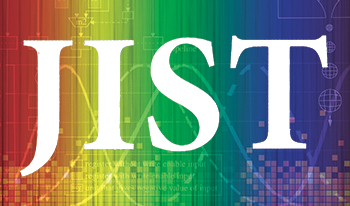
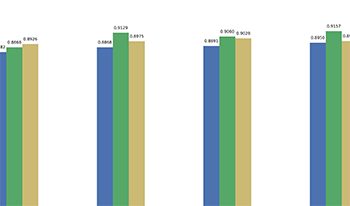
The excellent feature extraction ability of deep convolutional neural networks (DCNNs) has been demonstrated in many image processing tasks, by which image classification can achieve high accuracy with only raw input images. However, the specific image features that influence the classification results are not readily determinable and what lies behind the predictions is unclear. This study proposes a method combining the Sobel and Canny operators and an Inception module for ship classification. The Sobel and Canny operators obtain enhanced edge features from the input images. A convolutional layer is replaced with the Inception module, which can automatically select the proper convolution kernel for ship objects in different image regions. The principle is that the high-level features abstracted by the DCNN, and the features obtained by multi-convolution concatenation of the Inception module must ultimately derive from the edge information of the preprocessing input images. This indicates that the classification results are based on the input edge features, which indirectly interpret the classification results to some extent. Experimental results show that the combination of the edge features and the Inception module improves DCNN ship classification performance. The original model with the raw dataset has an average accuracy of 88.72%, while when using enhanced edge features as input, it achieves the best performance of 90.54% among all models. The model that replaces the fifth convolutional layer with the Inception module has the best performance of 89.50%. It performs close to VGG-16 on the raw dataset and is significantly better than other deep neural networks. The results validate the functionality and feasibility of the idea posited.
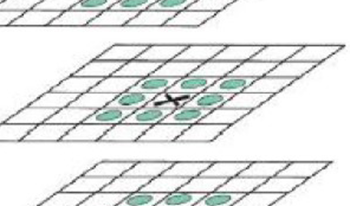
In underwater image acquisition process, due to the impact of water currents and other disturbances, the movement posture of the underwater machine will be unstable, which could lead to unusual problems such as twisting of underwater image capture. These factors will increase the error rate of feature point matching and lead to the failure of panoramic image mosaic. In this regard, we propose a new, highly applicable underwater image stitching algorithm. Firstly, the posture angle adjustment link is added to the underwater image processing, and the angle deflection problem of the underwater image is effectively improved by using the posture angle information. Secondly, the feature points of underwater images are extracted based on the accelerated robust feature (SURF) algorithm. Then, the reference image is matched with the feature points of the image to be registered, and effective feature point pairs are obtained by screening. Finally, the images are stitched based on OpenCV to obtain a good panoramic image. After experimental analysis and comparison, our method can increase the number of matching feature point pairs between images. In addition, the Euclidean distance is significantly shortened during the matching process, which further makes the matching of feature points more accurate. Our method satisfactorily overcomes the adverse effects of actual underwater operations and has a better application prospect.
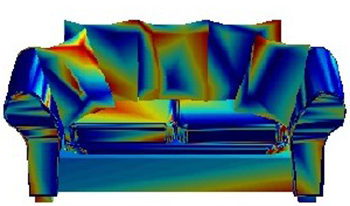
To meet the requirement of diverse geometric transformation and unstructured graph data for intelligent shape analysis method, this paper proposes a novel 3D graph recognition method based on geometric encoded feature learning, which effectively optimizes the feature extraction process from low-level geometry to high-level semantics, and improves the generalization and robustness of deep learning. Firstly, we adopt GMDS and KNN to build isometric embedding space and extract intrinsic geometric features. Secondly, in combination with the BoF method, the unified geometric encoded feature is generated, which effectively enhances the shape description ability of all kinds of graph data. Finally, an adaptive dynamic graph convolution network is established. Through dynamic spectral graph convolution and weighted feature refining, we implement efficient deep feature extraction and 3D graph recognition. A series of experimental results show that our proposed method achieves better performance in graph recognition and classification task. Moreover, whether the 3D graphs are rigid or non rigid, or incomplete and unconnected graph data, our method is significantly robust and efficient.

As a classic project for the inheritance of Chinese folk culture, Wupaolong has the characteristics of unique material selection and complex production technology. However, as the finished products of folk handicrafts may not comply with production standards, a common problem in the production of handicrafts. Focusing on the problems of poor visual effects such as uneven surface and jagged edges in the craft paper binding model constructed by point cloud, and the need to enhance the sense of reality, this paper proposes an optimization method for 3D model and triangulation based on 3D line features. This method first preprocesses the feature points and performs sparse matching and dense matching on the processed feature points to generate a dense point cloud. The dense point cloud is then processed by an adaptive weighted median filtering method. This is followed by application of surface modeling method based on Delaunay algorithm to realize the reconstruction of object triangulation. Based on the triangular patch, the reference plane of the craft paper binding surface is fitted, and the model surface is corrected and optimized based on the reference plane. With the aid of three-dimensional line segments, the triangulation at the edge of the craft paper binding is corrected and optimized. Finally, an optimized three-dimensional model of craft paper binding is obtained. Experimental results show that the proposed algorithm can improve the unevenness of the 3D model plane and edges, and maintain the characteristics of the 3D model plane and edges. Compared with the existing surface reconstruction algorithms based on point cloud features, the optimized triangulation and model have higher accuracy and quality, which can greatly improve the visual effect of the model and improve the accuracy of the three-dimensional model. The research results of this paper can realize 3D modeling development for the production process of Wupaolong, effectively improve the elevation accuracy of the model, realize the production standard of digital Wupaolong model, and provide reference for folk production process.

In Questioned Documents Examination, the sequence of crossing lines in the intersection of handwriting and printed area can be important clues for detecting tampered documents. Recognition of such documents is a arduous task and requires people with experience and expertise. In the present work, we investigated the possibility of determining the sequence of intersecting lines between LaserJet printing and handwriting for a series of simulated laboratory specimens in the document examination using color measurement technique. The spectral reflectance curves and color coordinates of some points on and out of the cross lines were compared. Four different commercial ballpoint pens and a black toner LaserJet were used to prepare the specimens. The color change of the intersecting lines was subjectively considered through the captured images and a visual assessment process. It was also objectively determined by determining the color difference values from the colorimetric data in CIELAB and CIELCH color spaces in the visible range. The color change evaluation showed that the order in which printing or handwriting is applied alters colorimetric results. Moreover, the investigations showed small color difference values of less than 2 units between a point of printed area individually, and intersection could be applied as a tolerance limit for pass/fail judgments.
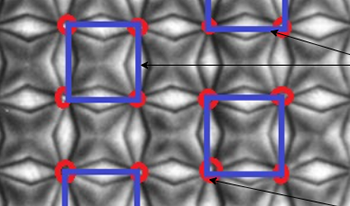
The procedures of white points detection and localization are practically complex on noisy images. In this paper, we propose an algorithm that detects and localizes white points on 3D film images. The proposed algorithm uses the fast Fourier transform to convert the binarized image into real and imaginary parts to obtain the number of white points along the horizontal and vertical. We determine the sorted coordinates of the white points by adding a brute-force solution to the coordinates obtained from the real part of the image. These sorted coordinates are obtained by subtracting the error between the Euclidean distances of the normalized coordinates along the vertical and horizontal direction. The proposed algorithm with and without brute-force achieved an average detection ratio of 0.98 and 0.88 respectively, while the others underperformed. We perform various experiments using the existing algorithms such as template matching, thresholding, and an iterative method to validate the performance of our algorithm. We also compare the rule-based algorithms that detect and localize objects in noisy images with the proposed one to determine the reliability of our algorithm. The experimental results indicate that the proposed algorithm performs better than the template matching, thresholding, and iterative algorithm.

In the production printing industry, printing speed of not only plain paper but also special paper has improved. After toner fixing process, when heat is applied to toner to fix it on paper, the toner on the paper stick to each other on outlet tray leading to toner blocking problem in high-speed printing. To control a paper cooling device, accurate prediction of the outlet paper temperature is useful. This, however, is not so easy; printing conditions and paper types are too diverse to conduct the experiments and the mechanism of the printer is also too complex to develop the physical model. The machine learning (ML) algorithm to predict the paper temperature was proposed under the limited printing conditions. In this research, the ML model that could improve prediction accuracy and generalization capability was developed by selecting appropriate paper properties for the input.
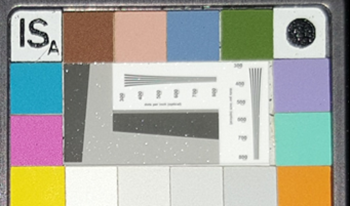
ENT-flexible endoscopes are an important tool for ear, nose and throat (ENT) professionals to examine the upper airway. Although image quality has improved significantly in the past decade, there is no generally accepted approach to measure this objectively. Sharpness, visual noise and color fidelity are aspects of image quality that can objectively be measured. The purpose of this study was to explore the relationship between these quality metrics and the subjective perception of image quality by ENT-professionals. The image quality of six different flexible endoscopes was assessed objectively and subjectively. Objective measurements were obtained using the Rez Checker Target Nano Matte and comprised sharpness (MTF50), visual noise and color fidelity (CIE ΔE 2000). Subjective image quality ranking was obtained by presenting images of a single larynx to 30 ENT-professionals in a forced pairwise comparison and asking them to select the image with the best image quality. Differences in image quality between endoscopes are reliably detected by objective measurement and subjective assessment. A strong positive correlation was found between sharpness and subjective ranking (p < 0.005). Visual noise and color fidelity may be relevant, but did not correlate with the subjective assessment and were probably overshadowed by the strong correlation between sharpness and subjective ranking in the data. The authors found that number of pixels on screen to display the registered image differs per type of endoscope, however more pixels do not necessarily imply a sharper image. The authors will continue their investigation of image quality metrics and their relation to diagnostic accuracy which can provide feedback on design and manufacturing optimization to the industry.
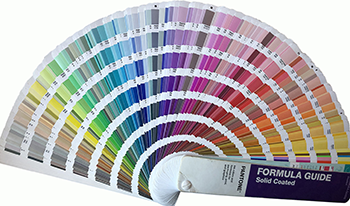
The Pantone® Formula Guide (or Guide), printed using specially-formulated inks on specified substrates, has been used widely by brands to specify brand color aims. While the Guide is silent on brand color tolerance, there are two competing criteria that influence the brand color tolerance, i.e., perceptibility and acceptability. Perceptibility-based color tolerance focuses on “Can I see the difference?” and the permissive difference is in the just-noticeable difference (JND) region. Acceptability-based color tolerance, focusing on “Can I accept the outcome?”, requires fit-for-use cases to identify what the just-acceptable difference (JAD) is. Instead of conducting psychometric tests, this research uses the 2019 Pantone® Formula (Coated) Guide, consisting of 2140 CIELAB colors, and data analyses of the “neighboring color difference” to investigate what is the acceptability-based color tolerance. The result shows that the acceptability-based color tolerance (3 ΔE00) has more margin than the perceptibility-based color tolerance (2 ΔE00).